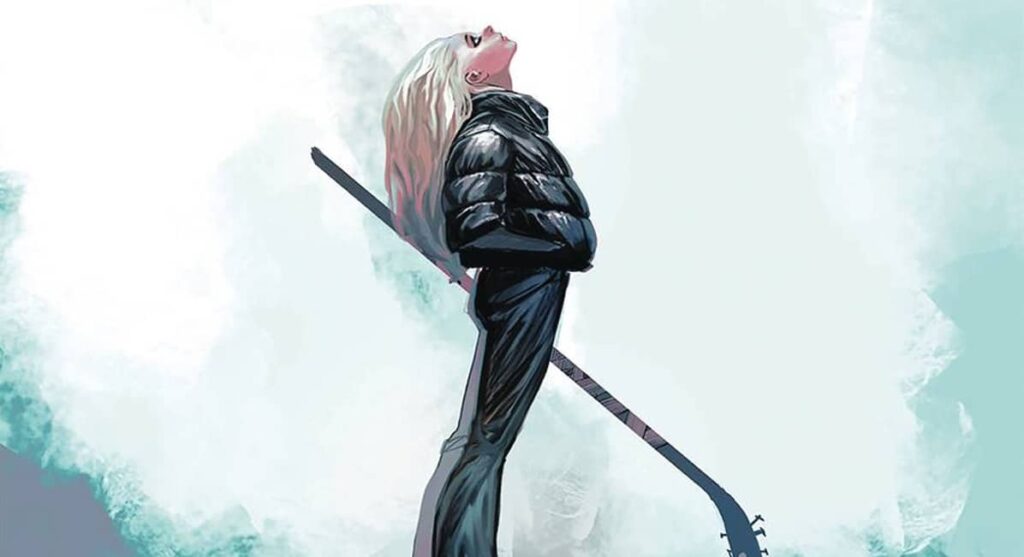

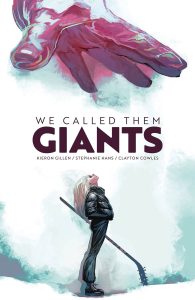 we call them giants
we call them giants
writer: Kieron Gillen
artist: Stephanie Hans
Writer: Clayton Cowles
Designer: Becca Kelly
Publisher: Image comics
The most common problem I encounter is with the modern graphic novel craze that is happening with Image Comics (largely driven by Ed Brubaker and Sean Phillips) is related to length. Mainly they are too short. Each graphic novel is approximately 120 pages in length. This leads to things like Alex Decampi and Erica Henderson’s Dracula, bastard or Brubaker/Philips evil house (I had a fair amount of time with both of them) The ending felt a little rushed. One can see these works alongside longer graphic novels (e.g. Kate Beaton’s Duck or the follow-up to De Campi/Henderson, parasocialBoth works are able to convey the full depth of their stories through longer pages.
About the roughly 90-page graphic novel We Call Them Giants, creators Kieron Gillen, Stephanie Hans, and Clayton Cowles have created a world where your complaints about its length aren’t because of the text The rushed nature, but because you wish you could have spent more time in it. The story is a fairly straightforward tale of two girls surviving in a post-apocalyptic environment filled with wandering gangs, carnivorous wolves, and inhuman giants.
The star of this production, of course, is Stephanie Hans. Hans is one of the greatest comic book artists of the modern era, and his watercolor style looks right at home in this decaying natural landscape. Of particular note is the fact that we see the titular titan on the first page. While the rest of the world is painted in various shades of brown, aqua, and tan, this giant’s color choices have a neon-like quality. Mostly leaning toward darker reds, yellows and turquoises, one is immediately drawn to the anachronistic nature of this giant, even if one ignores the fact that it is a giant.
On a related note, the character designs are top-notch work. While our protagonists—Lori and Annette—feel right at home in a YA post-apocalyptic novel, they feel like they’re drawn from different fusions of the genre in ways that complement their respective characters. And then there are the dogs, who are probably one of my favorite villain designs all year. while simultaneously calling to mind the Plague Doctor, the Cripple, and the Mad Max bastard, emphasizing the threat they pose to our protagonists, as well as their insignificance in the grand scheme of things.
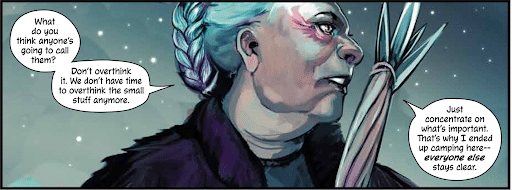
But not surprisingly, my favorite character is Beatrice. While Gillen is a writer primarily known for his stories about young people messing around and discovering the truth, here, still, no one does it better when it comes to writing about grumpy old ladies. Whether it’s from Ananke Evil + God or Bridget McGuire from past and futurethese characters are always a delight to watch. Here, Beatrice is perhaps both Gillen’s most endearing old lady and his most melancholy. A woman goes through decades of suffering and months of apocalypse to find herself on the other side feeling good and truly destined. Hans attracted her with her dignity and strength, and she would not let that stop her from caring for her two children.
In many ways, the post-apocalyptic genre is a better fit for Gillen than “Alternate History.” power fantasy. Despite Gillen’s interest in history, he remains a writer very relevant to the present. In works like this three or Evil + Godboth literally and thematically, have clear connections to the modern world. There is a materiality to the world that connects things to modernity. even unfinished works Uber Simply being placed in the past carries with it the importance of viewing events as current events rather than current context. And in “The Power Fantasy,” one gets the sense that materiality was lost somewhere along the way. It fails to transcend 1999 and therefore feels frivolous, frivolous, and like a bad pop song.
In contrast, post-apocalypse allows for a shift in the nature of the world that benefits Gillen’s skills as a writer. This was rarely seen in scenes from the previous modern era. Time Travel: Desolate Land arc, “Homo Tortor,” in which the monstrous horror of the crossover lingers and infects the world while keeping our characters on their toes. Although not as weird and uncomfortable as that job, we call them giants Still, the sense of danger and doom faced by our protagonists is retained.
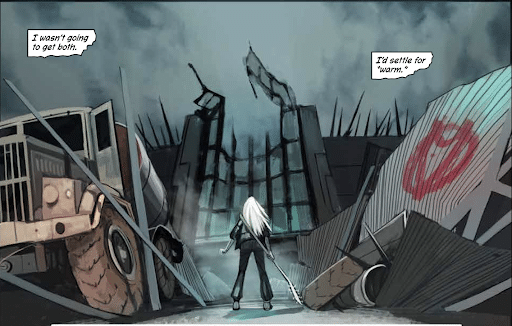
A further contrast between the two works is that, at their core: we call them giants This is a survivalist novel, a genre Gillen had never ventured into before. There are many examples of this type of fiction in movies, e.g. abandon to novels like this ax. The post-apocalyptic genre is filled with these stories, the most famous being one of my favorite stories from my childhood, Cormac McCartney the way. At the heart of these stories is how our different characters respond to the various elements the world faces; whether it’s weather, animals, or other people.
It is here that people begin to want to see more of the world. While what we saw of it was still an awe-inspiring sight for sore eyes, we have a feeling it would be even better if we could see more of it. Just spending time wandering the ruins with our heroine, enjoying the extent of vegetation growth and the world’s transformation away from industrialization, the dogs barely flicker.
On the other hand, you can see the temptation to go to longer lengths to explain what’s going on in the world. Why is the world coming to an end and other dull, boring questions. As is, we call them giants Still a truly outstanding work from some of the best artists in the industry and highly recommended to anyone who can find a copy. It makes the most of the graphic novel and leaves you wanting more.
Read more great reviews from The Beat!


